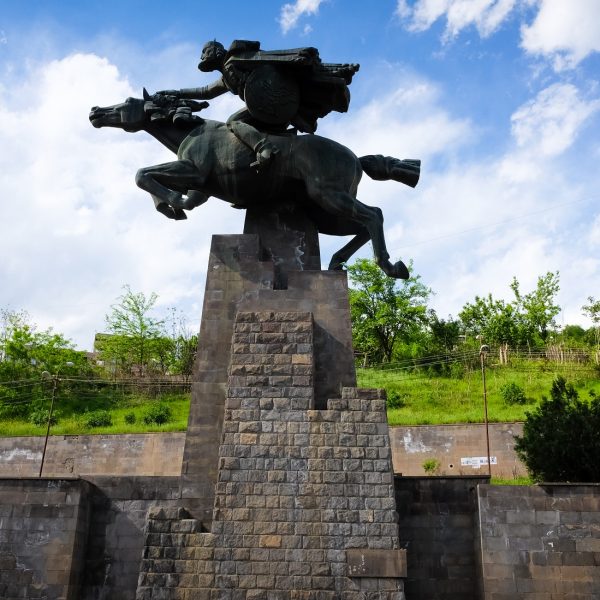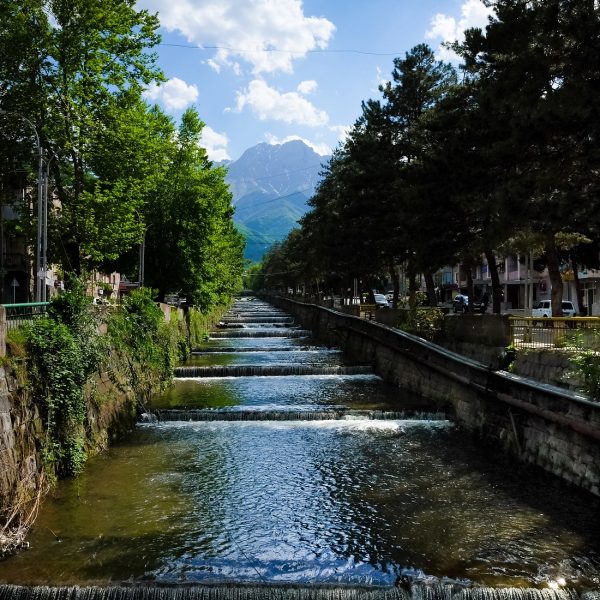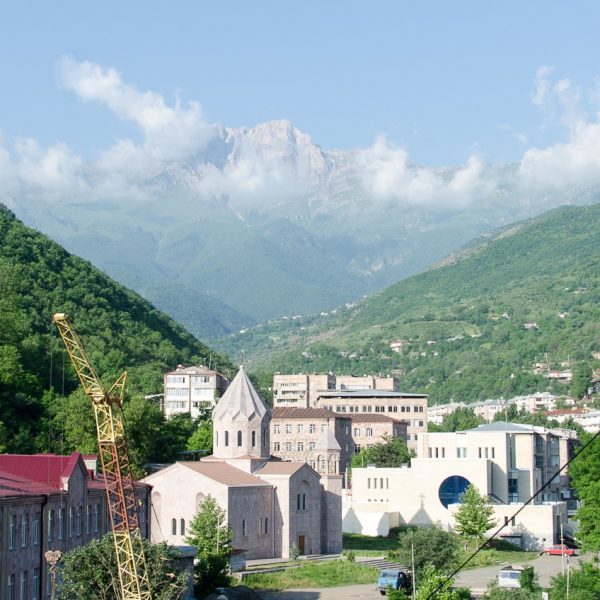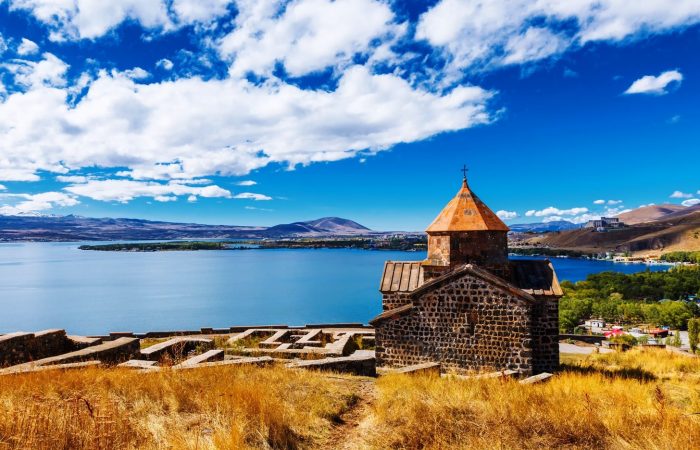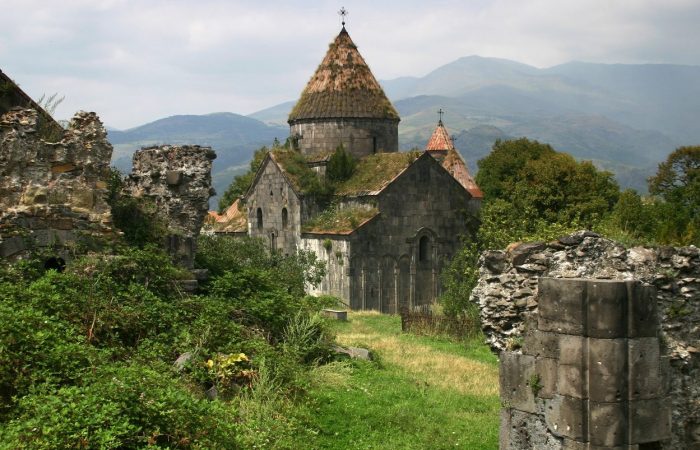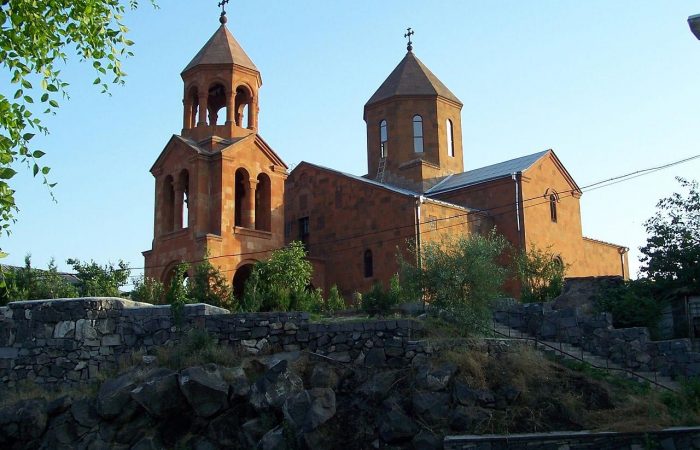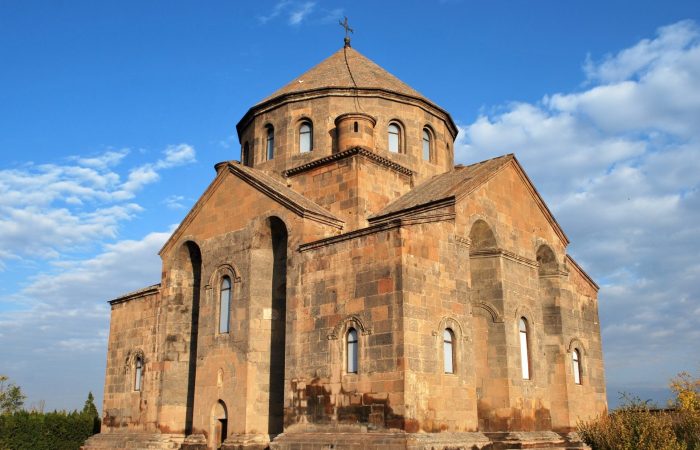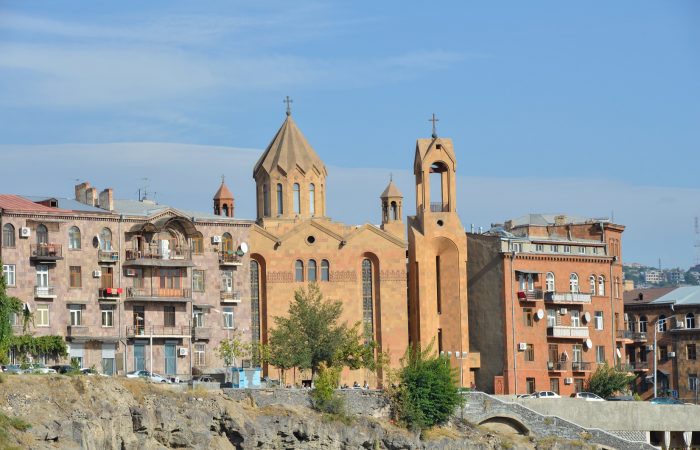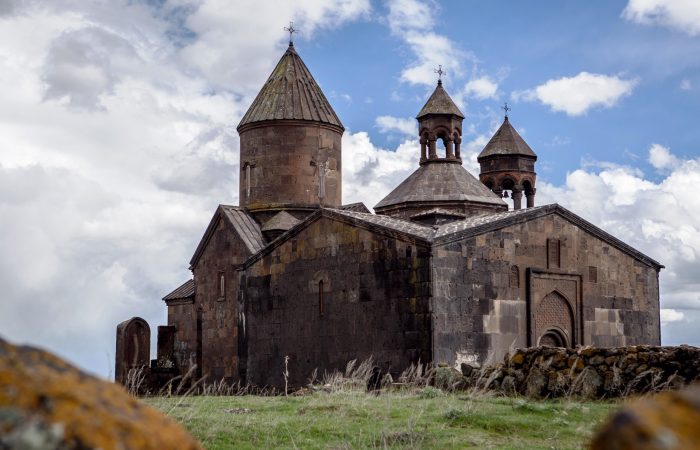Kapan: General
Kapan is located to the north-east of Armenia at the foot of Khustup Mountain. The city is located 750-1050 meters above sea level. The distance between capital Yerevan is 320 kilometers and the distance between the city and the Islamic Republic of Iran is 80 kilometers.
Kapan:Climate
Being situated in a deep valley Kapan has its unique microclimate. In summers the highest temperature recorded so far is 38-40 degrees Celsius, while in winters the temperature might get as low as (-10-15) degrees Celsius.
Kapan: Brief Historical Account
During the 16th-17thcenturies Kapan was under Persian rule. In the 18th century the liberation struggle started in Artsakh and Syunik regions and Kapan became the center of the liberation struggle of Syunik Province led by legendary hero David Bek. David Bek’s liberation groups scored a number of victories. But in 1727 the army of the Ottoman Turkey started attacking Syunik and eventually it had to surrender.
During the 18th century Kapan was always an apple of discord between Russia and Persia. In 1800 the city was basically divided between the two states. Upon the Treaty of Gyulistan in 1803 and the Treaty of Turkmenchai in 1828 the city appeared under the Russian control. After the fall of the Russian Empire (1918-1920), Kapan was again “proclaimed” as the center of liberation struggle. In 1921 Armenia became a Soviet Union State and only in 1991 Armenia became an independent republic. New administrative divisions were made in the city. In 1995 the city was divided into provinces and Kapan became the center of Syunik province.
Syunik: Ancient Civilization
There are over 450 historical-cultural monuments in Kapan. Historian Stepanos Orbelyan (13th century) who carefully studied the history of Kapan presented reliable evidence proving that the region had its civilization starting from the 5th century BC.
The settlement was called Yotnaberd in the Old times. The naming has perhaps to do with the fact that borders of the settlement were marked by seven fortresses (“yot” means seven and “berd” means fortress in English).
The settlement has been mentioned as a city since the 10 century and since the end of the 10th century the city has been mentioned as the capital of Syunik Kingdom. The city fell in 1103.
Kapan: Etymology
There is no any clear explanation regarding the meaning of the city’s name. One interpretation has it that “kapan” is an Indo-European word, which means a canyon. Another explanation is that “kap” means “closed, locked” and this explanation is supported by the fact that the city is really locked by surrounding mountains.
Kapan: Things to See
Khustup Mountain – Khustup Mountain is located to the south of Kapan and offers a splendid view. It’s over 3200 meters high and offers a marvelous view. There are five routes to get to it.
Halidzor Fortress – Halidzor Fortress was built in the 17th century with the goal to serve as a convent. However, it was then converted to a castle-fortress. It’s a walled fortress with pyramids. This fortress has played a huge role in the liberation struggles of Syunik.
Vahanavank – Vahanavank (Vahan Monastery) was built in the 10th-11th centuries by Armenian Prince Vahan. The monastic complex includes the Church of Gregory the Illuminator built in 911, the gavit and the Church of Saint Astvatsatsin (Holy Mother of God). The monastery is a must visit for everyone who visits the city.
Baghaberd Fortress – Known as one of the ancient fortresses of Armenia Baghaberd was built by Prince Baghak. It had double walls out ofwhich only several ruined towers and pyramids presently remain.
Kapan History Museum – The historical museum contains thousands of artifacts. Among them are 19th century swords and carpets, which are worth to be seen.
Tatev Monastery – Tatev Monastery is actually not located in the city of Kapan, but it is so close to the city that is very often included in the list of places to see in the city. Tatev Monastery is one of the primary sites to see in Armenia due to its location as well as because of the fact that you can get there by the longest ropeway in the world. The scene from above is more than splendid. The monastery covers a large area on which the following structures are erected: ruins of Saint Eustathius Church, oil Press, defensive Walls, old Gate and Spring, East Gate, Saint Astvatsatsin Church, stables and student Dormitory, pilgrim Inn, TatevMatenadaran-Museum, cells and rooms, belfry, Paul-Peter Church, GrigorTatevatsi Mausoleum, Saint GrigorLusavorich Church, refectory, kitchen, bakery, bishop residence, bath and 18th century school.
Mesrop Mastots Church – Being the first church of Kapan city Mesrop Mashtots Church captures with its modern yet modest architecture. It’s one place where the culture and national feelings of the local people unite. One of the initial goals of constructing this church was to found a place of faith and the goal was beyond doubt achieved.
To sum up, of interest are also the Monument of David Bek and the Memorial dedicated to GareginNzhdeh. The city also has its branch of Yerevan Modern Art Museum. The collection the museum features is not as rich as the one in Yerevan, but, still, it’s one place art lovers should pay a visit to.

